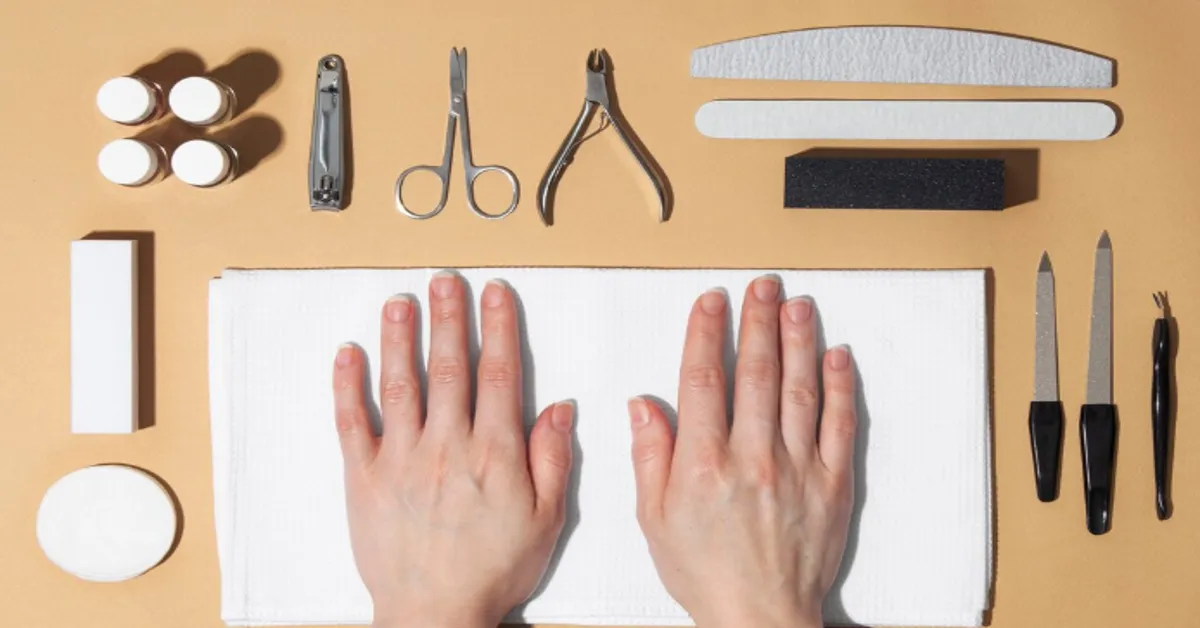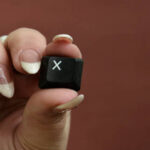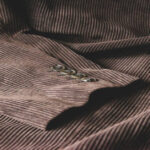For over a century, the emery board has remained a staple in personal grooming kits, tucked into handbags, medicine cabinets, and manicure sets. But what exactly is an emery board, and why has it endured as an indispensable tool in both home and professional nail care? In this comprehensive exploration, we’ll uncover the origins, anatomy, applications, variations, and best practices surrounding the emery board—an item that might seem simple at first glance, but whose utility and subtle impact on grooming habits is profound.
At its core, an emery board is a thin, flat tool made from a stiff material, typically cardboard or foam, coated with emery—a type of granular rock used as an abrasive. Primarily used to file fingernails and toenails, its design allows for precise shaping without the risk of tearing or splitting the nail. But the story of the emery board extends far beyond the confines of a nail salon.
What Is an Emery Board?
An emery board is a hand-held grooming tool used to shape and smooth the edges of fingernails or toenails. Its surface is coated with fine grains of emery, a mineral abrasive that works by gently sanding the keratin layers that compose the nail. The typical emery board is flat, elongated, and has a double-sided texture, often with varying grits on each side for versatility in filing.
A Brief History of the Emery Board
The origins of the emery board date back to the late 19th and early 20th centuries when personal grooming products became more widely available due to industrial manufacturing. Prior to this innovation, people used metal files or rudimentary sandpaper techniques to maintain their nails.
Manicure pioneer Flowery Beauty Products introduced one of the first commercially successful emery boards in the early 1900s. Their invention revolutionized home grooming by making nail maintenance safer, more precise, and accessible to all. Over time, the emery board became synonymous with at-home beauty and self-care—a symbol of everyday luxury and personal attention.
Types of Emery Boards
Emery boards are not one-size-fits-all. Depending on the user’s needs, the material and grit type can vary significantly:
| Type | Material | Common Use |
|---|---|---|
| Standard Cardboard | Cardboard + Emery | Everyday nail grooming |
| Foam-Core | Foam + Emery | Gentle filing, suitable for natural nails |
| Crystal Emery Board | Glass + Fine Grit | Long-lasting, hygienic, used for smooth finishes |
| Professional Salon Grade | Wood + Dual Grit | Durable for acrylic or gel nails |
| Mini/Travel-Sized | Compact materials | Convenient for on-the-go maintenance |
Each type serves a unique function, offering users a choice between precision, durability, and portability.
How Emery Boards Differ from Nail Files
The emery board is often confused with other nail tools, particularly metal or glass nail files. However, the distinction lies in their construction and use:
- Emery boards are disposable, made of layered materials, and offer flexibility.
- Metal files are more abrasive and designed for tough artificial nails.
- Glass/crystal files are smoother, more durable, and better suited for thin or weak nails.
Because of their gentle texture and affordability, emery boards remain a preferred choice for natural nails and general grooming.
Materials Used in Emery Boards
The effectiveness of an emery board largely depends on the quality and composition of its materials:
- Core: Often made from compressed cardboard, foam, or wood. Foam adds flexibility, while wood offers sturdiness.
- Coating: The abrasive layer typically consists of crushed emery, aluminum oxide, or other fine mineral compounds.
- Adhesive: Modern boards use non-toxic glues to adhere the grit to the surface.
Innovations in materials have led to boards that are water-resistant, washable, and even biodegradable.
How to Use an Emery Board Correctly
Proper technique ensures not only beautiful nails but also prevents damage. Follow these steps:
- Start with clean, dry nails.
- Choose the appropriate grit (coarser for shaping, finer for smoothing).
- File in one direction—never back and forth, which can cause splitting.
- Begin at the outer edge and move inward with gentle strokes.
- Use a finer side to polish and finish.
Incorrect use can lead to frayed nails, cuticle damage, or even infection if hygiene is overlooked.
Emery Board Grit Explained
Grit refers to the coarseness of the emery board, typically ranging from 80 to 240 grit:
| Grit Level | Texture | Best For |
|---|---|---|
| 80–100 | Very Coarse | Artificial nails, heavy shaping |
| 120–180 | Medium Coarse | Natural nails, moderate shaping |
| 220+ | Fine | Smoothing, finishing touches |
A dual-grit board offers versatility in a single tool, with one side for shaping and the other for refining.
Common Uses Beyond Nail Care
Though primarily associated with nail grooming, emery boards are surprisingly multipurpose:
- Crafts: Artists use them for shaping clay or smoothing rough edges.
- Technology: DIYers use them to clean small electrical contacts.
- First Aid: Can assist in removing small splinters when other tools are unavailable.
- Model Building: Useful in sanding plastic or wood miniatures with precision.
Its compact size and abrasive surface make it a tool of convenience beyond cosmetics.
How to Choose the Right Emery Board
Factors to consider when selecting an emery board:
- Nail type: Softer nails require fine grit; harder nails can withstand coarse grit.
- Usage frequency: Choose reusable, washable versions if filing often.
- Portability: Mini boards are better for travel or quick touch-ups.
- Sustainability: Opt for biodegradable or glass alternatives to minimize environmental impact.
Professional users often maintain a variety of boards for different client needs.
Maintenance and Hygiene
Though inexpensive and disposable, emery boards should still be maintained properly to ensure hygiene:
- Single Use: For personal or professional settings, do not share boards to prevent bacteria transfer.
- Cleaning: If reusable, rinse under warm water and scrub lightly with soap and a brush.
- Storage: Keep in a dry, clean container to avoid moisture and mold growth.
Replace your emery board once the grit feels dull or the edges become frayed.
Emery Boards in Professional Use
In salons, emery boards are used not just for shaping, but also for surface smoothing before applying gel or acrylic. Regulations in some countries require one-time use per customer to maintain sanitation.
Professionals also rely on a range of grits and materials to match the service being provided, such as nail sculpting, cuticle refinement, or final polishing.
Environmental Impact and Sustainability
Most traditional emery boards are not recyclable, leading to unnecessary waste. Fortunately, eco-conscious alternatives are emerging:
- Bamboo-based cores: Sustainable and biodegradable.
- Washable glass or crystal boards: Long-term use reduces waste.
- Compostable adhesives: Reduce chemical pollution in landfills.
Choosing a durable or eco-friendly emery board reflects not only grooming habits but values in environmental responsibility.
DIY Tips Using Emery Boards
Creative uses at home include:
- Sharpening eyeliner pencils in a pinch.
- De-pilling sweaters on small sections.
- Creating textured nail art with varying grit surfaces.
- Opening stuck jars by adding grip using the rough side.
Its fine texture offers unexpected utility when improvisation is needed.
Emery Boards in Cultural and Cosmetic Trends
Emery boards have subtly mirrored societal beauty trends. In the 1920s, short rounded nails were fashionable, and boards catered to that style. The 1980s saw a rise in acrylics and longer nails, leading to harder, salon-grade boards.
Today’s trends include minimalist grooming, self-care routines, and eco-beauty—all of which favor multipurpose, reusable, and stylish emery boards.
Children and Emery Boards: Safety and Usage
Children’s nails require gentle filing due to their softness. Specialized emery boards for babies exist with ultra-fine grit and foam padding to ensure safety.
Parents are advised to supervise usage and educate older children on gentle filing techniques to avoid injuries.
Traveling with Emery Boards
Unlike metal nail files, emery boards are TSA-compliant and easily fit into compact beauty kits. Some travel-specific models come with protective cases or attached mirrors for added convenience.
They’re especially useful during travel when access to salons is limited but maintaining grooming is desired.
The Future of Nail Tools and Innovations
As beauty becomes more personalized and tech-driven, innovations in nail care tools—including emery boards—are on the rise:
- Smart filing tools with vibration sensors.
- LED-disinfected boards for hygiene assurance.
- Refillable or modular emery boards to reduce waste.
These new developments aim to blend sustainability with high-performance beauty tools.
Conclusion: Why Emery Boards Still Matter
Despite being simple, affordable, and often overlooked, the emery board has retained its relevance for over a century. Whether you’re shaping a nail, fixing a hangnail, or engaging in a quiet self-care ritual, this small tool carries a big impact. As grooming trends evolve and sustainability becomes paramount, the emery board’s form may shift, but its function remains timeless—a testament to the enduring elegance of simplicity in personal care.
If you haven’t revisited your grooming kit in a while, perhaps it’s time to pay closer attention to the humble emery board. It might just be the most underrated item in your routine.
FAQs
1. What is the difference between an emery board and a nail file?
An emery board is typically a disposable nail tool made of cardboard or foam with an abrasive surface, while a nail file can be made from metal, glass, or ceramic and is usually more durable. Emery boards are gentler on natural nails and are often preferred for routine grooming.
2. Can emery boards damage your nails?
Yes, improper use of an emery board—such as filing back and forth aggressively or using the wrong grit—can lead to nail splitting, peeling, or weakening. Always file in one direction and use an appropriate grit for your nail type.
3. How often should I replace my emery board?
Replace your emery board every few weeks or sooner if the grit feels worn, the board is fraying, or it becomes unhygienic. For professional or shared use, consider single-use to maintain cleanliness.
4. Are emery boards safe for children’s nails?
Yes, as long as you’re using boards with ultra-fine grit specifically designed for delicate nails. Supervision is recommended, and avoid rough or coarse boards for babies and young children.
5. Can I clean and reuse an emery board?
Standard emery boards are generally meant to be disposable, but foam-core or glass-coated versions can be cleaned with soap and water. Let them air dry completely to prevent bacterial growth before reuse.











